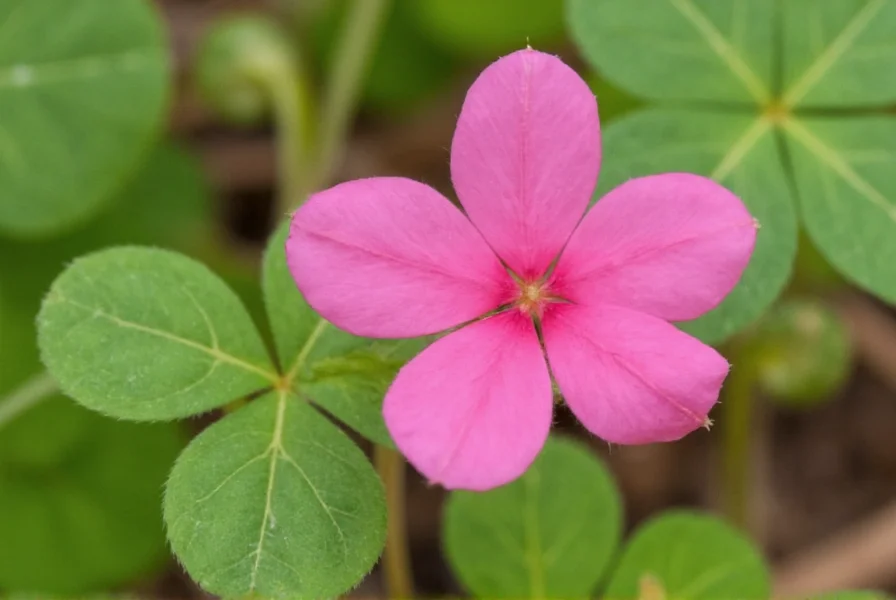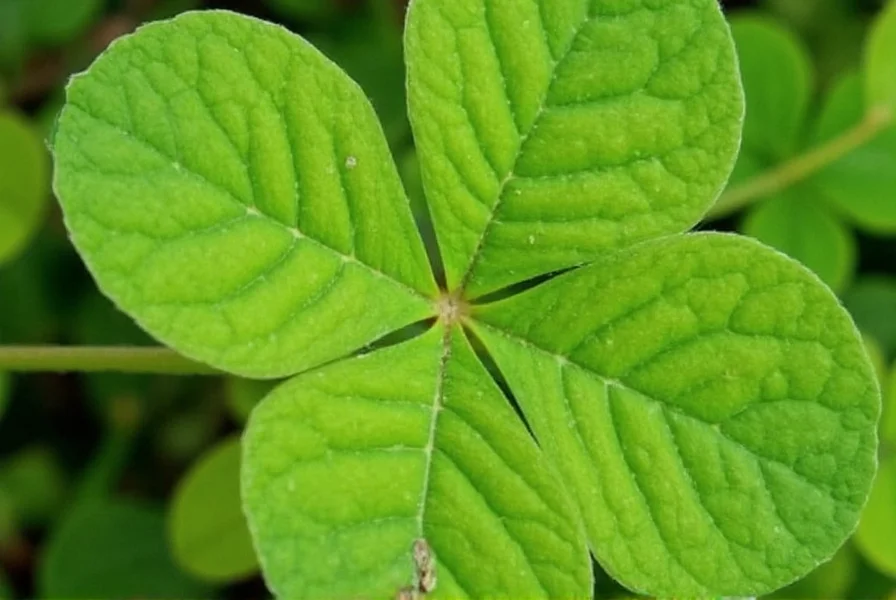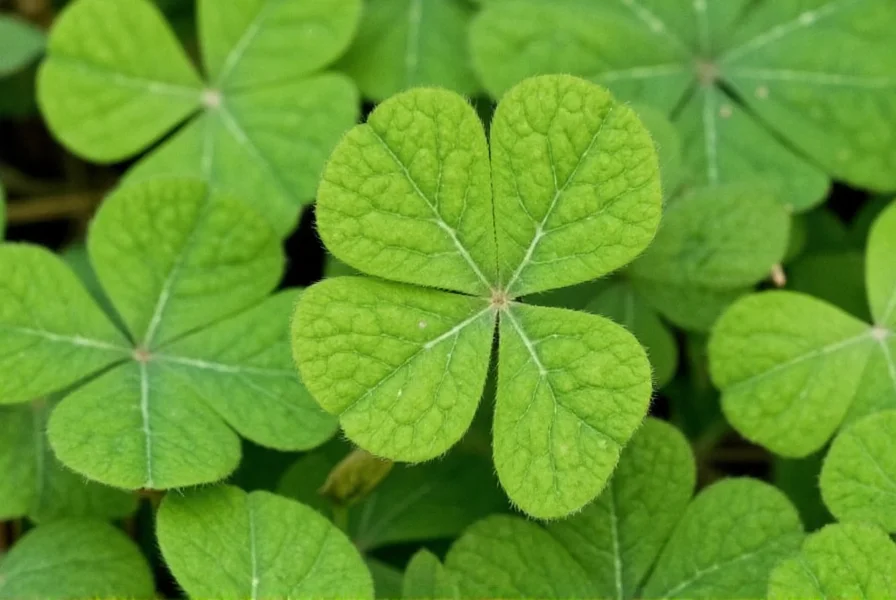When gardeners and agricultural professionals search for \"stomy clover,\" they're almost certainly looking for information about strawberry clover, a versatile plant with significant benefits for sustainable farming practices and ecological restoration projects. Understanding this common terminology mix-up helps provide accurate information to those researching this valuable plant species.
Botanical Classification and Identification
Strawberry clover (Trifolium fragiferum) belongs to the Fabaceae family, sharing characteristics with other clover species but distinguished by several unique features. Unlike the more common red clover (Trifolium pratense) or white clover (Trifolium repens), strawberry clover produces distinctive seed heads that swell and turn reddish-brown as they mature, creating the strawberry-like appearance that gives the plant its name.
The plant typically grows 10-30 cm tall with creeping stems that root at the nodes, allowing it to form dense mats. Its leaves consist of three oval leaflets with fine teeth along the edges, and it produces small white to pinkish flower heads that develop into the characteristic fruit-like structures.
| Characteristic | Strawberry Clover | Red Clover | White Clover |
|---|---|---|---|
| Scientific Name | Trifolium fragiferum | Trifolium pratense | Trifolium repens |
| Height | 10-30 cm | 20-80 cm | 5-20 cm |
| Growth Habit | Creeping, rooting at nodes | Erect | Prostrate, stoloniferous |
| Distinguishing Feature | Strawberry-like seed heads | Bright pink flower heads | White flower heads, dark midrib on leaves |
Habitat and Geographic Distribution
Native to Europe and western Asia, strawberry clover has adapted to a wide range of environments, particularly thriving in moist conditions. This makes it especially valuable for areas with poor drainage where other clover species might struggle. You'll commonly find strawberry clover growing naturally in:
- Marshy meadows and riverbanks
- Coastal areas with saline soils
- Damp pastures and grasslands
- Roadside ditches and other moist disturbed areas
Unlike many other clover varieties, strawberry clover demonstrates remarkable tolerance to both flooding and moderate salinity, making it an excellent choice for challenging agricultural environments. Gardeners searching for \"stomy clover characteristics\" often need this specific information about its environmental adaptability.

Agricultural and Ecological Benefits
When farmers inquire about \"stomy clover uses\" or \"strawberry clover for pasture,\" they're typically interested in its practical applications. This plant offers several significant advantages:
Nitrogen Fixation and Soil Improvement
Like all legumes, strawberry clover hosts nitrogen-fixing bacteria in root nodules, converting atmospheric nitrogen into a form plants can use. This natural fertilization process:
- Reduces the need for synthetic nitrogen fertilizers
- Improves soil fertility for subsequent crops
- Enhances soil structure through extensive root systems
Forage Value for Livestock
Strawberry clover provides high-quality forage with excellent palatability for various livestock. Its benefits include:
- Good protein content (typically 15-20%)
- Lower bloat risk compared to some other legumes
- Persistence in grazing systems due to its creeping growth habit
- Extended grazing season because of its tolerance to close grazing
Cultivation Requirements for Home Gardeners
For those searching \"how to grow stomy clover\" or \"strawberry clover planting guide,\" understanding proper cultivation techniques is essential. While this plant establishes more slowly than some other clovers, its long-term benefits make it worthwhile.
Soil and Site Selection
Strawberry clover performs best in:
- Moist to wet soils (it tolerates temporary flooding)
- Slightly acidic to neutral pH (6.0-7.5)
- Full sun to partial shade
- Areas with moderate fertility (excessively rich soils may encourage weed competition)
Planting and Establishment
Successful establishment requires attention to detail:
- Seed at 2-4 kg per hectare (2-4 lbs per acre) when planting in pure stands
- Shallow planting depth (0.5-1 cm) as seeds are small
- Ideal planting times are early spring or late summer/early fall
- Consider inoculating seeds with the appropriate Rhizobium bacteria strain for optimal nitrogen fixation

Common Misconceptions About Strawberry Clover
The confusion around \"stomy clover\" represents just one of several common misunderstandings about this plant. Other frequent misconceptions include:
- It's just a weed: While it can appear in disturbed areas, strawberry clover is intentionally cultivated for specific agricultural benefits
- It causes bloat like other legumes: Strawberry clover actually has lower bloat risk compared to alfalfa or some other clovers
- It's difficult to establish: While establishment can be slower than white clover, proper planting techniques yield good results
- It doesn't persist well: Once established, strawberry clover forms a persistent stand through its creeping growth habit
Strawberry Clover in Sustainable Agriculture Systems
Modern agricultural practices increasingly recognize the value of strawberry clover in sustainable farming systems. When researching \"stomy clover benefits for farming,\" professionals discover its role in:
- Cover cropping: Its tolerance to wet conditions makes it ideal for winter cover in regions with heavy rainfall
- Organic farming: Provides natural nitrogen fixation without synthetic inputs
- Riparian buffer zones: Helps filter runoff and stabilize stream banks due to its tolerance of moist conditions
- Biodiversity enhancement: Supports pollinators with its extended flowering period
Unlike some other cover crops that require termination, strawberry clover can often be managed through grazing or mowing to fit into diverse crop rotations. This flexibility makes it particularly valuable for farmers implementing regenerative agriculture practices.
Frequently Asked Questions
Is stomy clover the same as strawberry clover?
Yes, \"stomy clover\" is almost certainly a misspelling or mishearing of \"strawberry clover\" (Trifolium fragiferum). This common confusion occurs because the words sound similar when spoken aloud, especially in agricultural contexts where terminology can be misheard.
What are the main differences between strawberry clover and white clover?
Strawberry clover (Trifolium fragiferum) differs from white clover (Trifolium repens) in several key ways: it has a more creeping growth habit with stems that root at nodes, produces distinctive strawberry-like seed heads, tolerates wetter conditions and moderate salinity better, and generally has a longer flowering period. White clover typically has a darker midrib on its leaves and forms lower-growing mats.
Can strawberry clover be used for lawns or ornamental purposes?
While not commonly used as a primary lawn species, strawberry clover makes an excellent component in eco-lawn mixes, particularly in areas with poor drainage. Its tolerance to close mowing, ability to fix nitrogen, and attractive pinkish-white flowers make it valuable for sustainable landscaping. Many gardeners searching for \"stomy clover for lawn\" are actually looking for this application.
How does strawberry clover handle drought conditions?
Strawberry clover prefers moist conditions and is less drought-tolerant than some other clover species like white clover. While it can survive short dry periods, extended drought will cause it to go dormant. Its strength lies in its tolerance to wet conditions rather than dry ones, which is why it's often chosen for areas with poor drainage or seasonal flooding.
Is strawberry clover suitable for honey production?
Yes, strawberry clover produces abundant nectar and is considered good for honey production. Its extended flowering period provides a valuable nectar source for bees throughout the summer months. The resulting honey tends to be light in color with a mild flavor, though it's not as commonly associated with commercial honey production as some other clover varieties.











 浙公网安备
33010002000092号
浙公网安备
33010002000092号 浙B2-20120091-4
浙B2-20120091-4